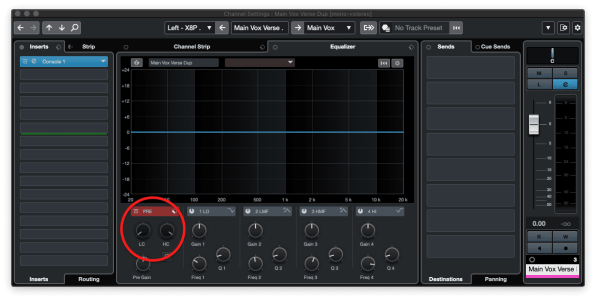Buffalo Bill
New Member
Hi guys!
I want to made my first question, and is about automatize volume.
Recently I had learned that if you want automatize a volume track, is better DONT do it using the track fader.
You must use some kind of GAIN control in the pre-fader side. This way you always can later adjust the overall relative volume in the mix using the main track fader without affect the automation itself.
Ok, that sounds sense...
In FL Studio I used some plugin like "Fruity Balance" or "Maximus".
Now in Cubase, when I add an automation on the track, this works directly in the gain pre-filter.

(picture taked from the web)
Is ok use this in this way? Or should be better use a dedicated/specific plugin in a insert slot? Pros/cons?
What do you think?
At same time, is correct to use the default EQ module (the one in the pic in the EQUALIZER tab) or should be better use a specific EQ module as an insert?
Meybe a specific module will give us more control/quality?
Thoughts?
Many thanks!
I want to made my first question, and is about automatize volume.
Recently I had learned that if you want automatize a volume track, is better DONT do it using the track fader.
You must use some kind of GAIN control in the pre-fader side. This way you always can later adjust the overall relative volume in the mix using the main track fader without affect the automation itself.
Ok, that sounds sense...
In FL Studio I used some plugin like "Fruity Balance" or "Maximus".
Now in Cubase, when I add an automation on the track, this works directly in the gain pre-filter.

(picture taked from the web)
Is ok use this in this way? Or should be better use a dedicated/specific plugin in a insert slot? Pros/cons?
What do you think?
At same time, is correct to use the default EQ module (the one in the pic in the EQUALIZER tab) or should be better use a specific EQ module as an insert?
Meybe a specific module will give us more control/quality?
Thoughts?
Many thanks!






